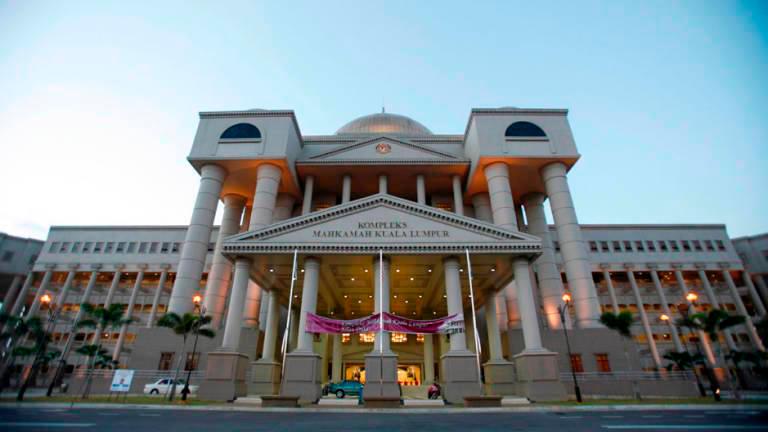OUR politicians and other leaders may disagree on most subjects. However one issue where there is a consensus – mostly expressed privately for fear of alienating or incurring the opposition of the largest and most influential occupational grouping in the country – is that the civil service is badly in need of reform.
The areas of reform have been crystal clear for 20 years. One prime minister after another since Tun Dr Mahathir Mohamad’s first stint has drawn attention to the urgency of making the civil service more effective. Countless papers have been written and speeches made on the civil service as the key stumbling block to improving national competitiveness. But whatever actions taken have been in the opposite direction to serve Umno’s agenda.
Many other papers have focused on the endemic fraud and corruption that pervades the civil service, especially at higher levels of management. Transparency International Malaysia (TIM) estimated the nation lost RM46.9 billion in 2017 due to corruption within the public sector. The figure was almost double the allocation for national healthcare in that year. Or it could have built some 117,250 affordable 1Malaysia People’s Housing Scheme homes priced at RM400,000 a unit for low- and middle-income Malaysians.
At that time, TIM president Datuk Akhbar Satar said that the RM46.9 billion amount was likely to be a conservative estimate. “Corruption in the country’s civil service has been increasing over the years and is valued at about 5% of Malaysia’s gross domestic product (GDP)”. This staggering figure was confirmed by Datuk Seri Dr Wan Azizah Wan Ismail in her keynote address to an anti-corruption forum in 2018.
So how much is civil service-driven fraud and corruption costing the country now under a Pakatan government? And can the efforts of MACC under Latheefa Koya make a meaningful difference?
There have been optimistic sound bytes on Pakatan’s success in initiating “innovative measures” to address corruption and the recent trumpeting of an improvement in the latest Corruption Perceptions Index of Malaysia released by Transparency International. However there are very few people in any position of authority who will agree with the view that meaningful reform on this front is taking place or is on the way.
Civil service and the national budget
Concern has also for a long time been focused on the bloated size of the civil service and how this is impacting the nation’s finances. Yet nothing has been done to downsize the elephant in the Treasury room.
The latest available data on the national budget gives little cause for comfort with emoluments for the estimated 1.6 million civil servants amounting to over one third of total operating expenditure. When the pension bill of civil servants are added to the figure, we find that 45% or even more of the national budget goes towards paying for the government workforce. And this figure increases every year even without any new civil servant hiring.
One financial projection exercise has estimated that taxpayers will pay RM248 billion for civil service emoluments, salaries, pensions and gratuities by 2027, up from the 2020 estimated total of RM114 billion.
This increase of about 11% a year is almost double the GDP growth rate. It can only be met with more borrowing, increased taxes and reduced government expenditure. Even such a figure may be at the lower end of the range of actual expenditure on the civil service since it is not clear how health services, housing and other entitlements provided to civil servants are dealt with in the national financial accounting.
Socio-economic modelling of what this inexorable and possibly underestimated progression in the national civil service bill will mean to the country’s standard of living and way of life has not been initiated by any organisation or body, including academia and think tanks. This perhaps may be because the outcome is regarded as too alarming to accept or too politically-sensitive to be put out in the public sphere. But even without such modelling the severity of the socio-economic and political impacts that Greece has had to endure since 2009 arising from excessive government spending and its sovereign debt crisis should serve to warn our policymakers that the sooner the hard decisions are implemented on downsizing – not rightsizing – the civil service, and action taken to reduce the civil service bill, the more secure the nation’s future will be.
Civil service ethnic restructuring
There is one last aspect of civil service reform that has practically disappeared from scrutiny. It is in some ways the most urgently needed. In 1970 when the New Economic Policy (NEP) was put into effect, the second prong of what is seen by some today as part of the nation’s sacred social contract was the reduction in the identification of economic function with ethnicity.
This ethnic restructuring prong was deemed to be vital to the cause of national unity and it was intended to apply to not just the private sector. It was also to be implemented in the public sector or the civil service. So what has happened since 1970 in the case of this reform which was part of the original NEP? To what extent has it been implemented and has it been a success or a failure. And is ethnic equality of participation or representation or however it is termed in the civil service one of the key policy objectives in the new Shared Prosperity Vision that has been unveiled for the nation?
A second part of this article will provide a glimpse of where we are with the noble aspiration of civil service ethnic restructuring that was promised by the NEP.
Lim Teck Ghee’s “Another Take” is aimed at demystifying status quo orthodoxy. Comments: letters@thesundaily.com














